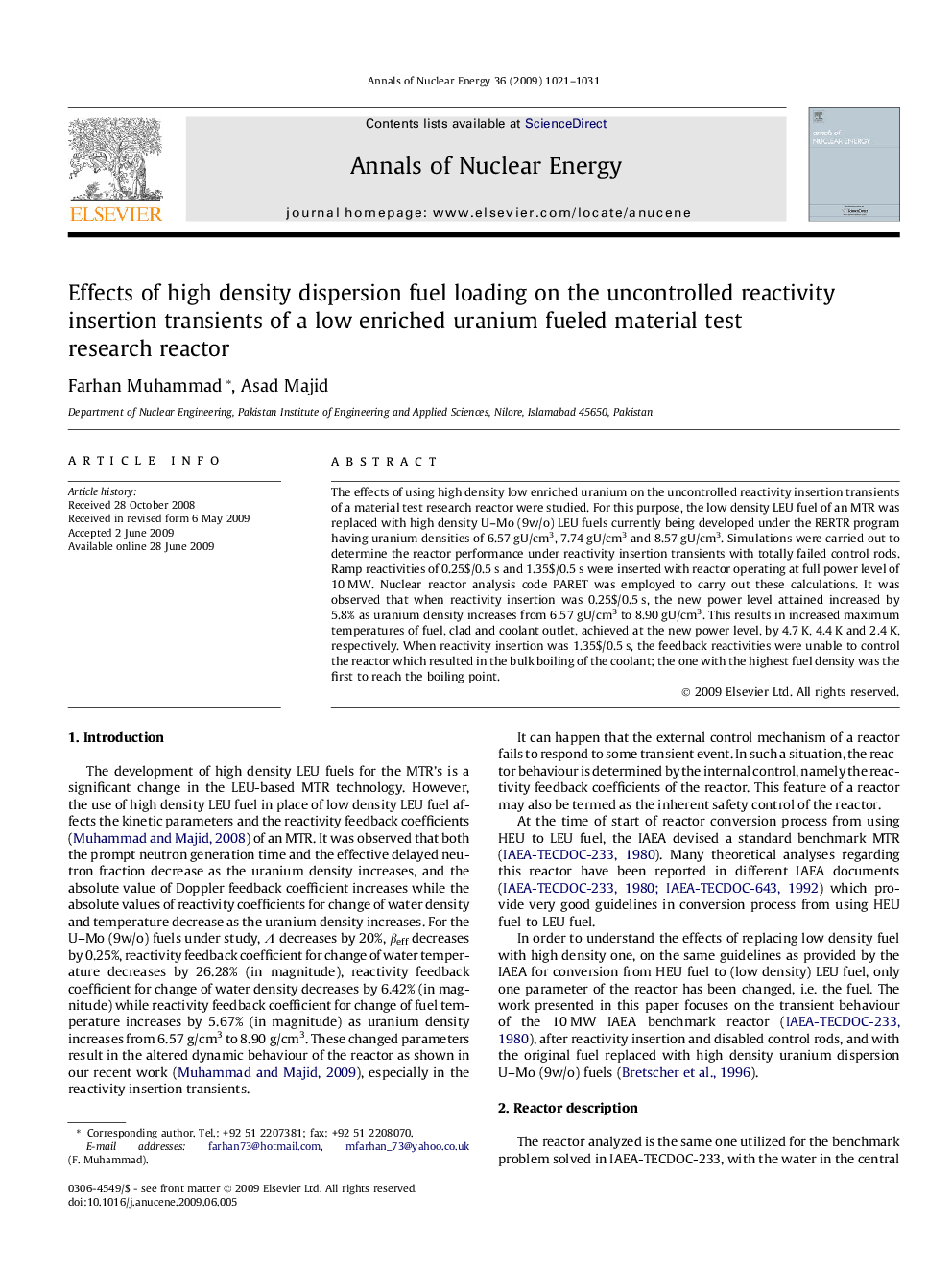| Article ID | Journal | Published Year | Pages | File Type |
|---|---|---|---|---|
| 1729830 | Annals of Nuclear Energy | 2009 | 11 Pages |
Abstract
The effects of using high density low enriched uranium on the uncontrolled reactivity insertion transients of a material test research reactor were studied. For this purpose, the low density LEU fuel of an MTR was replaced with high density U-Mo (9w/o) LEU fuels currently being developed under the RERTR program having uranium densities of 6.57Â gU/cm3, 7.74Â gU/cm3 and 8.57Â gU/cm3. Simulations were carried out to determine the reactor performance under reactivity insertion transients with totally failed control rods. Ramp reactivities of 0.25$/0.5Â s and 1.35$/0.5Â s were inserted with reactor operating at full power level of 10Â MW. Nuclear reactor analysis code PARET was employed to carry out these calculations. It was observed that when reactivity insertion was 0.25$/0.5Â s, the new power level attained increased by 5.8% as uranium density increases from 6.57Â gU/cm3 to 8.90Â gU/cm3. This results in increased maximum temperatures of fuel, clad and coolant outlet, achieved at the new power level, by 4.7Â K, 4.4Â K and 2.4Â K, respectively. When reactivity insertion was 1.35$/0.5Â s, the feedback reactivities were unable to control the reactor which resulted in the bulk boiling of the coolant; the one with the highest fuel density was the first to reach the boiling point.
Related Topics
Physical Sciences and Engineering
Energy
Energy Engineering and Power Technology
Authors
Farhan Muhammad, Asad Majid,
